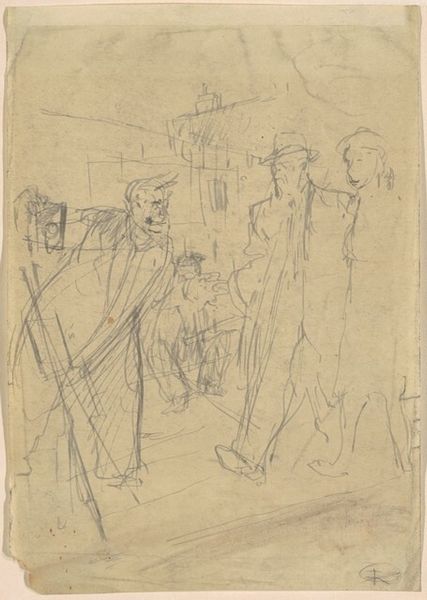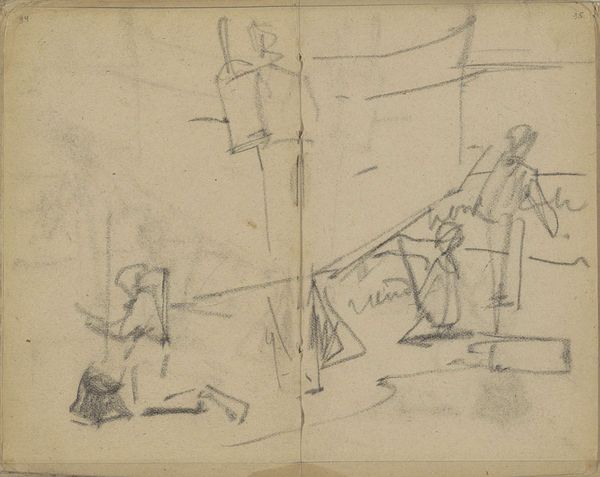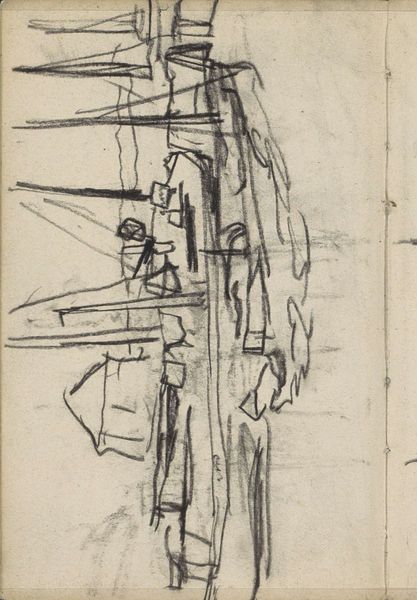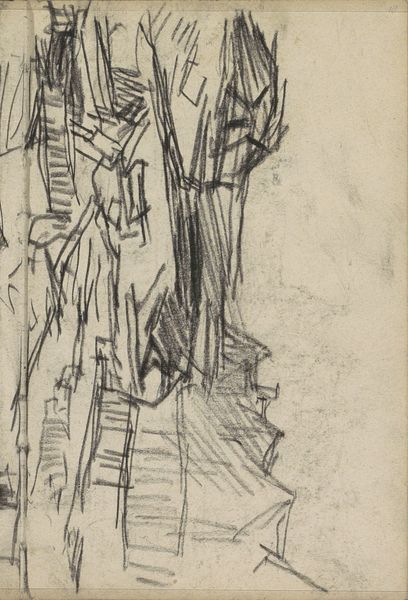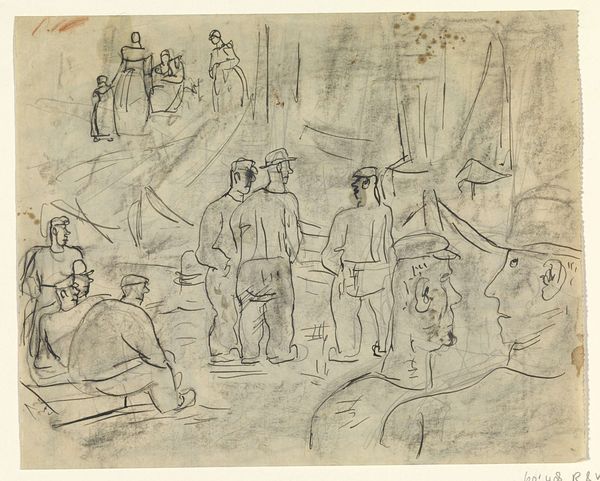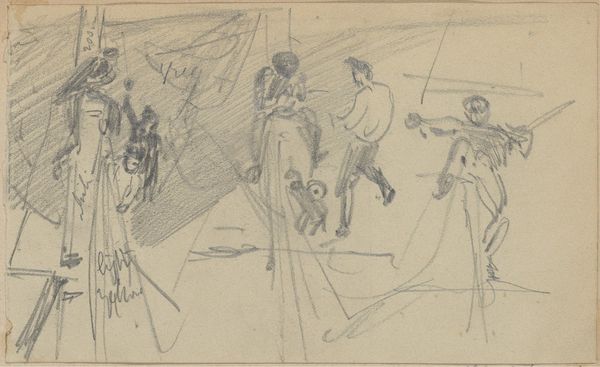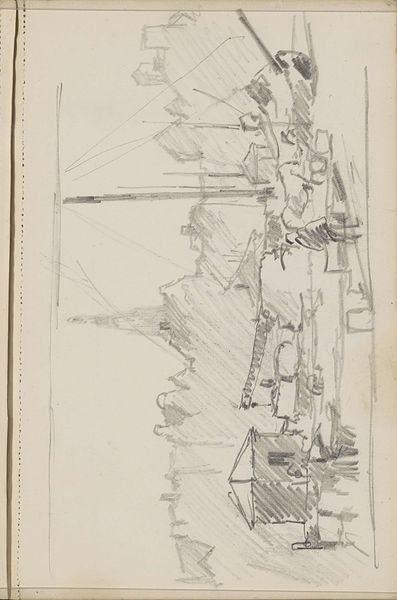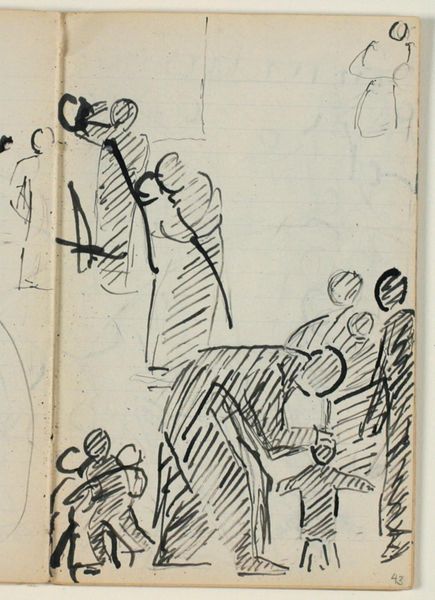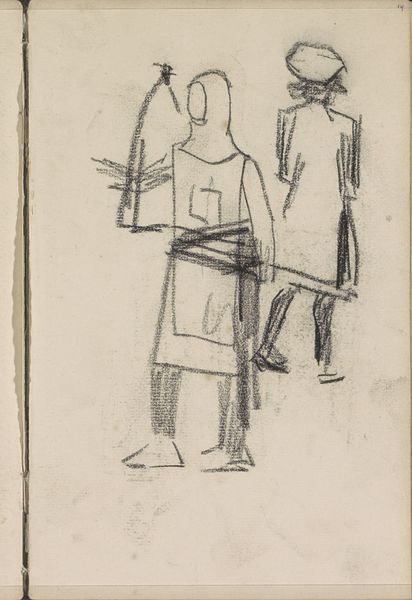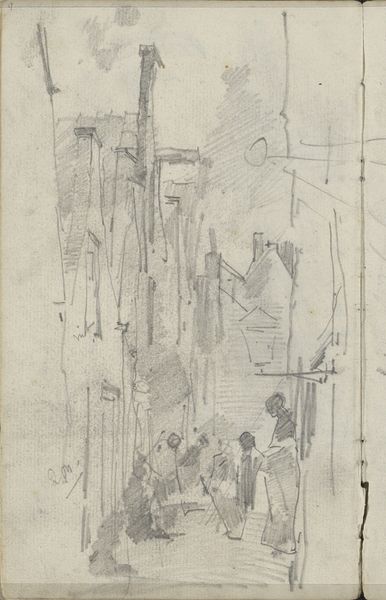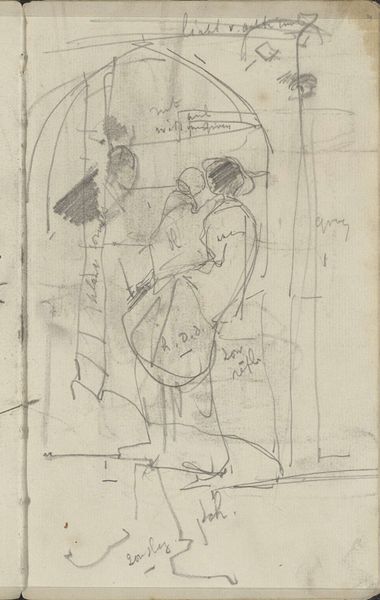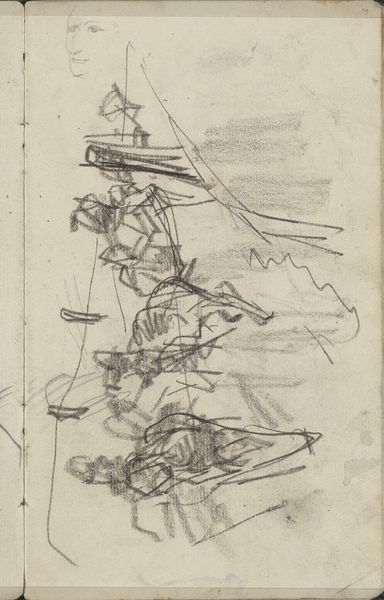
Brug met figuren op de hoek van het Spui en het Rokin te Amsterdam 1886 - 1923
0:00
0:00
Dimensions: height 202 mm, width 130 mm
Copyright: Rijks Museum: Open Domain
Curator: This drawing, dating roughly from 1886 to 1923, is by George Hendrik Breitner. The work is titled "Brug met figuren op de hoek van het Spui en het Rokin te Amsterdam" - "Bridge with figures on the corner of the Spui and Rokin in Amsterdam". It is currently held at the Rijksmuseum. Editor: There’s a palpable sense of fleeting moments captured here, almost like a quickly scribbled memory. I'm drawn to the anonymity of the figures; they blend into the urban landscape itself. Curator: It’s a wonderful example of Breitner's approach. Note how the lines aren't overly precious, but efficient and direct. You see how he prioritized a readily available and affordable material, pencil, for a rapidly rendered impression? Editor: And I’m struck by the urban environment portrayed. The bridge isn't just a structure; it’s a social space, a site of transit and encounter. What do we know about the socio-economic conditions around the Spui and Rokin during Breitner's time? It feels essential in interpreting this scene. Curator: Certainly. The rapid industrialization of Amsterdam significantly impacted its inhabitants, influencing the kinds of art that were made. Mass production methods and an increasing divide in labor facilitated a market and appetite for these sorts of rapidly executed depictions of modern life, at this time, it becomes divorced from an overtly celebratory purpose, reflecting the complexities of living through rapid urban change. Editor: Thinking about who has historically been excluded from representing these urban spaces interests me. As the art world, even during Breitner’s time, predominantly represented elite perspectives. Curator: That’s astute. I appreciate the perspective you bring about gender, race, class and representation. As an audio guide stop, one goal should be to empower visitors to contemplate these things, particularly given that the majority of individuals living and working at this location, during this time, would have never received recognition. Editor: Exactly. Thanks, this really adds another layer of appreciation for what Breitner captured. I leave now thinking about the untold stories contained within that brief sketch.
Comments
No comments
Be the first to comment and join the conversation on the ultimate creative platform.
